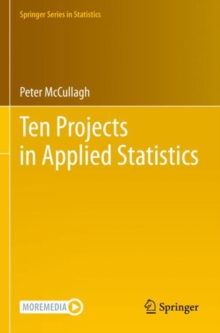
Modeling Discrete Time-to-Event Data Paperback / softback
by Gerhard Tutz, Matthias Schmid
Part of the Springer Series in Statistics series
Paperback / softback
Description
This book focuses on statistical methods for the analysis of discrete failure times.
Failure time analysis is one of the most important fields in statistical research, with applications affecting a wide range of disciplines, in particular, demography, econometrics, epidemiology and clinical research.
Although there are a large variety of statistical methods for failure time analysis, many techniques are designed for failure times that are measured on a continuous scale.
In empirical studies, however, failure times are often discrete, either because they have been measured in intervals (e.g., quarterly or yearly) or because they have been rounded or grouped.
The book covers well-established methods like life-table analysis and discrete hazard regression models, but also introduces state-of-the art techniques for model evaluation, nonparametric estimation and variable selection.
Throughout, the methods are illustrated by real life applications, and relationships to survival analysis in continuous time are explained.
Each section includes a set of exercises on the respective topics.
Various functions and tools for the analysis of discrete survival data are collected in the R package discSurv that accompanies the book.
Information
-
Out of stock
- Format:Paperback / softback
- Pages:247 pages, 3 Illustrations, color; 55 Illustrations, black and white; X, 247 p. 58 illus., 3 illus.
- Publisher:Springer International Publishing AG
- Publication Date:31/05/2018
- Category:
- ISBN:9783319802855
Other Formats
- Hardback from £51.99
- PDF from £67.58
Information
-
Out of stock
- Format:Paperback / softback
- Pages:247 pages, 3 Illustrations, color; 55 Illustrations, black and white; X, 247 p. 58 illus., 3 illus.
- Publisher:Springer International Publishing AG
- Publication Date:31/05/2018
- Category:
- ISBN:9783319802855










